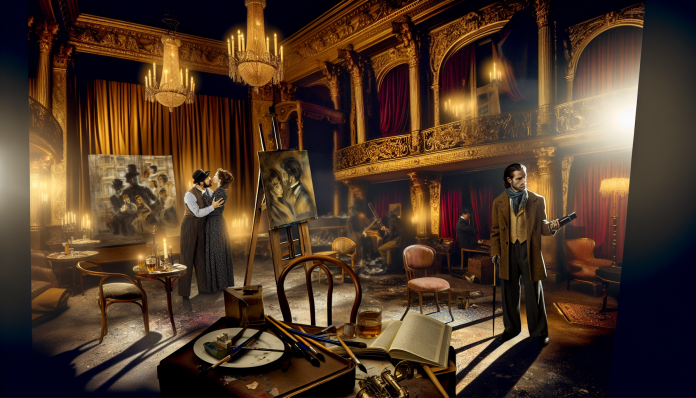The Passionate Palette: Exploring the Erotic Art of Gustav Klimt and His Hidden Entanglements
Introduction
Gustav Klimt, one of the most recognizable names in early 20th-century art, is best known for his richly decorated paintings that often merge sensuality with mythological themes. Among these, The Kiss and Portrait of Adele Bloch-Bauer I epitomize his unique style—intricate patterns, lush gold leaf, and, most notably, an unrestrained celebration of eroticism. However, the artist’s life was as tumultuous and embroiled in scandal as his canvases were with sensuality. The scandals surrounding Klimt’s personal relationships and the erotic undertones of his works serve as a fascinating lens through which to explore societal norms of the time and their evolution in modern contexts.
At the turn of the 20th century, Vienna was a breeding ground for artistic and sexual exploration. Social norms were concurrently restrictive and liberating; while the bourgeois society upheld conservative values, the rise of psychoanalysis and works by figures like Sigmund Freud were beginning to challenge these traditions. Klimt’s art, rife with erotic imagery, clashed with these prevailing moral attitudes—a fact that sparked a significant scandal when some of his most provocative works began to circulate.
The Scandal
Klimt’s most notorious entanglement can be traced to his relationship with the model and muse Emilie Flöge. Their connection, often speculated to be both romantic and platonic, exemplifies the tension between societal expectations and personal desires. Klimt was known to have had numerous affairs with his models, a choice that was often reflected in the intimate nature of his paintings. The scandal bubbled to the surface during the early 1900s, particularly when Klimt’s portrayal of sexuality became the focal point of public discourse.
In 1902, he exhibited his work Philosophy as part of the Vienna Secession, stirring considerable controversy. Critics lambasted the piece for its blatant depictions of sexuality and nudity, claiming that it undermined the moral fabric of society. The exhibition was attended by various social elites, but opinions diverged sharply; supporters praised Klimt’s boldness, while detractors deemed him a purveyor of indecency. As one critic remarked, “Klimt’s canvases … are nothing but a delirious erotic dream, devoid of morality.”
However, the reaction wasn’t merely limited to art critique. Klimt’s romantic exploits with women, particularly those of the higher social echelons like Flöge, painted him as both a passionate artist and a scandalous libertine, which severely impacted his reputation, framing him as a controversial figure in Vienna’s artistic circles.
Moral and Cultural Analysis
The societal reaction to Klimt’s entanglements was a mix of outrage and intrigue. While some conservatives decried his artistic expressions as immoral, many admired the freedom he represented. Art critics and the public were enthralled, leading to a cult-like status around Klimt that continues to this day.
In the wake of the scandals, Klimt’s work faced censorship, leading to a temporary withdrawal from the Vienna Secession. Nevertheless, he remained a potent symbol of the liberating possibilities of art and expression, paving the way for future artists to explore sexual freedom without as much societal constraint.
Fast forward to today, Klimt’s work would likely still prompt discussion, but profound shifts in societal norms mean that contemporary audiences generally celebrate his exploration of erotic themes rather than condemn them. Unlike in Klimt’s time, where nudity in art sparked outrage, today’s viewers often embrace it as a celebration of the human form and sexuality.
What was once scandalous can now be interpreted through a more nuanced lens, emphasizing personal agency and sexual liberation, reflecting broader, more progressive views on art and expression. As the 21st century continues to navigate conversations around sexuality, Klimt stands not only as a controversial historical figure but also as a powerful advocate for the liberated exploration of desire in art.

